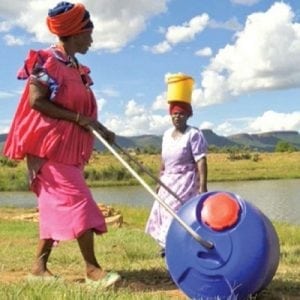
Agriculture
June 22, 2024
Hippo Water Roller
Read SolutionImplemented by
Hippo Roller
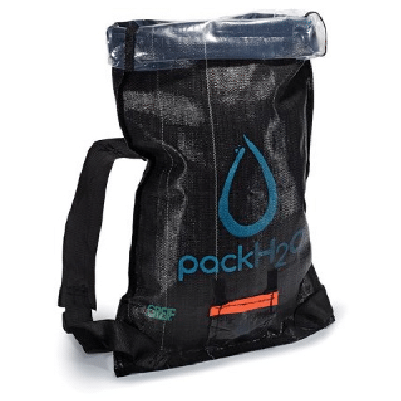
Updated on August 4, 2024
·Created on June 10, 2016
Backpack designed to transport water from source to community.
Greif PackH2O is a collapsible, adjustable water backpack designed to carry up to 20 litres of water over long distances. As of 2020, this product is discontinued.
Target SDGs
SDG 3: Good Health and Well-Being
SDG 6: Clean Water and Sanitation
Market Suggested Retail Price
$10.00
Target Users (Target Impact Group)
Household, NGOs
Distributors / Implementing Organizations
Greif worked closely with professional organisations such as USAID, the Clinton Global Initiative, and Habitat for Humanity International to develop the product. The company partners with NGOs and other organisations including Partners for Care to distribute the packs.
Competitive Landscape
Direct competitors include Wello WaterWheel, Q Drum, and Hippo Water Roller.
Regions
Worldwide
Manufacturing/Building Method
Mass produced in Turkey by Greif.
Intellectural Property Type
Trademark
User Provision Model
Greif partners with locally established NGOs that distribute the PackH2Os and train users in how to use and sterilise them.
Distributions to Date Status
As of 2018, approximately 225,000 units have been distributed.
Container Volume (Liters)
20
Handle for pouring (yes/no)
Yes
Transport Method
Backpack
Design Specifications
The backpack can hold up to 20 L of water. It is designed to be adjusted to the size and strength of the user, distributing the weight evenly. A wide opening allows for quick filling of the pack while the roll-down top and protected spout reduces water loss and contamination of the water. The pack is made from industrial-grade flexible woven polyethylene with a removable PET inner liner which can be sanitised in the sun. The pack is UV resistant, leak proof and puncture resistant. It is 7 times lighter and smaller than typical plastic jerry cans.
Technical Support
Greif's NGO partners provide training and education on how to use the PackH2O.
Replacement Components
Unknown
Lifecycle
Unknown
Manufacturer Specified Performance Parameters
The designers aim to provide a means to safe water transportation and storage.
Vetted Performance Status
MIT D-Lab conducted a study in 2014 to investigate water collection, transport, storage and treatment in Kenya and to gain an understanding of PackH2O usage. Their study found that the majority of PackH2O recipients used the pack mainly, or solely, for water storage. Research conducted by Andrea Martinsen et al. into the use of the PackH2O in rural Haiti concluded that after 6 months, the pack was not widely used by recipients to collect water with many considering it too heavy and difficult to carry compared to traditional head-loading methods. The study proposes that it may be more useful in emergency situations or in communities where loads are traditionally carried on the back, however, more research would be needed.
Safety
Collected water may sometimes contain contaminants and harmful bacteria. The pack does not treat any harmful substances that may be present in the water, although the liner can be disinfected once the water is removed from the pack.
The backpack may be heavy when full so training should be provided by distributing organisations.
Complementary Technical Systems
Disinfection tablets, filters, or any other means of water purification may be used to ensure safe, potable water.
Academic Research and References
Al-Dabbah, A., 2016, Omnipreneurship: An Organized Approach to Living A Life of Meaning.
Martinsen, A. L. et al., 2019, Alternative Water Transport and Storage Containers: Assessing Sustained Use of the PackH2O in Rural Haiti, The American journal of tropical medicine and hygiene, 100(4), pp. 981-987. Doi:10.4269/ajtmh.18-0228.
Spirk, Nottingham. n.d. “Collapsible Backpack for Water.” Nottinghamspirk.Com. Accessed July 7, 2024. https://www.nottinghamspirk.com/our-work/collapsible-backpack-innovation-to-solve-the-worlds-water-crisis
Staff Reports. 2014. “PackH2O Fights Global Clean Water Crisis.” BORGEN. June 9, 2014. https://www.borgenmagazine.com/packh2o-fights-global-clean-water-crisis/
“PackH2O.” n.d. Partners for Care. Accessed July 7, 2024. https://www.partnersforcare.org/blog/categories/packh2o
Moore, David. 2018. “Safe Water For The Little Children.” Partners for Care (blog). October 18, 2018. https://www.partnersforcare.org/post/safe-water-for-the-little-children
“Goal 3.” n.d. Sdgs.Un.Org. Accessed July 7, 2024. https://sdgs.un.org/goals/goal3
“Goal 6.” n.d. Sdgs.Un.Org. Accessed July 7, 2024. https://sdgs.un.org/goals/goal6
Weese, Evan. 2013. “Greif Spinoff PackH2O Bringing Safe Water to Homes in Developing Countries.” Columbus Business First. September 13, 2013. https://www.bizjournals.com/columbus/blog/2013/09/grief-spinoff-packh2o-bringing-safe.html
Pr, Alli Noland-Terra. 2018. “Eagle Creek and PackH2O Provide World Water Day Relief for Puerto Rico.” SNEWS. March 6, 2018. https://www.snewsnet.com/press-release/eagle-creek-and-packh2o-provide-world-water-day-relief-for-puerto-rico
Post, Susan. 2013. “Columbus-Based PackH2O Is Helping Residents Across the Globe.” Columbus Underground. November 14, 2013. https://columbusunderground.com/columbus-based-packh2o-helping-residents-across-the-globe/
In, Editors’ Note Named. n.d. “An Interview with David B. Fischer, President and Chief Executive Offi Cer, Greif PackH20 on Its Own (Left) and in Action in Africa (Above).” Leadersmag.Com. Accessed July 7, 2024. https://www.leadersmag.com/issues/2013.2_Apr/PDFs/LEADERS-David-Fischer-Greif.pdf
“PackH2O on Instagram: ‘How Does the Pack Work? Check out This Infogram!’” n.d. Instagram. Accessed July 7, 2024. https://www.instagram.com/p/ntOPsJv45t/
“A $10 Backpack That’s Helping Solve the World’s Water Crisis –.” 2014. USGLC. March 25, 2014. https://www.usglc.org/blog/a-10-innovation-thats-helping-solve-the-worlds-water-crisis/
N.d. Mit.Edu. Accessed July 7, 2024. https://d-lab.mit.edu/sites/default/files/inline-files/Water%20Transport%20D-Brief_final.pdf
Martinsen, Andrea L., Erin Hulland, Raina Phillips, Jean Allain Darius, Erica Felker-Kantor, Dan Simpson, Mariana Stephens, Evan Thomas, Rob Quick, and Thomas Handzel. 2019. “Alternative Water Transport and Storage Containers: Assessing Sustained Use of the PackH2O in Rural Haiti.” The American Journal of Tropical Medicine and Hygiene 100 (4): 981–87. https://doi.org/10.4269/ajtmh.18-0228
Compliance with regulations
Unknown
Evaluation methods
Greif conducted field surveys, and used the information to provide multiple iterations of the design to create the current product.
MIT D-Lab conducted a 5 week needs assessment in Kenya in 2014, using a variety of qualitative methods to collect information.
Andrea L. Martinsen et al. conducted a 6 month evaluation in Haiti in 2014/15, to assess both self-reported and observed use of the pack in over 400 households.

Agriculture
June 22, 2024
Implemented by
Hippo Roller
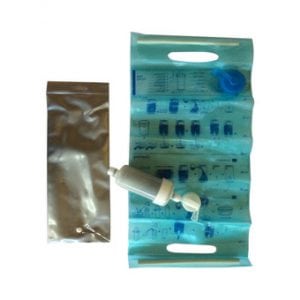
Agriculture
December 29, 2023
Implemented by
RealRelief
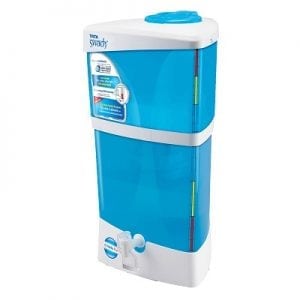
Agriculture
January 1, 2024
Implemented by
TATA Swach
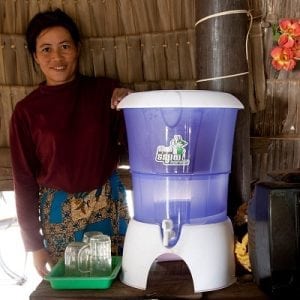
Agriculture
January 4, 2024
Implemented by
iDE
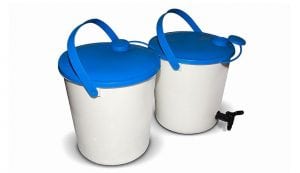
Agriculture
January 10, 2024
Implemented by
NRSRelief

Agriculture
January 24, 2024
Implemented by
AidGear
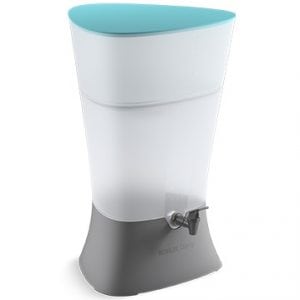
Agriculture
January 11, 2024
Implemented by
Kohler
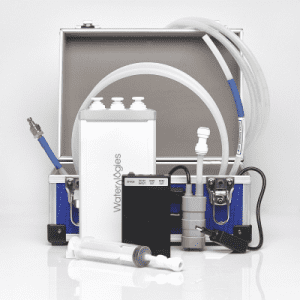
Agriculture
January 25, 2024
Implemented by
Waterologies
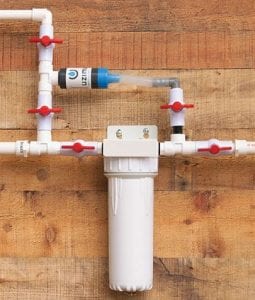
Agriculture
January 2, 2024
Implemented by
Uzima
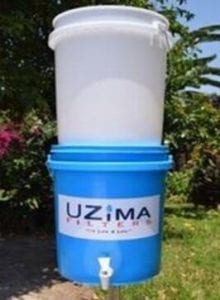
Agriculture
January 2, 2024
Implemented by
Uzima
Have thoughts on how we can improve?
Give Us Feedback
As per Bob: Given
where these units will be deployed effective quality control is essential. For any unit to contain manufacturing defects
or to arrive ‘dead-on-arrival’ at the customer is absolutely unacceptable. This requires both process control and
appropriate testing during manufacturing as well as final assembly and test to
ensure product quality. “checking Inâ€
quality after assembly will not be possible.
As per Bob: Both
coverage to obtain orders and logistics to ensure delivery must be designed to
function effectively in the specified environment. The stated distribution of “Africa†and
“India†is unclear as to whether these products will be used in capital cities
or more broadly in regional centers or even up country clinics. The product information simply says that
distribution will be made through a “NGO/Partner†… much more detail is
required to define and effective strategy and ability to scale.
The effort and rigor in the design and manufacturing process to secure regulatory approval should not be underestimated. This requires documentation starting at the initial design and concept stages of the product. For example, is there a documented Failure Mode and Effects Analysis to guide the design process that defines both expected and reasonably unexpected misuse of the product – and the associated design, process control and/or (lastly and least effectively) labeling to effectively mitigate these risks?